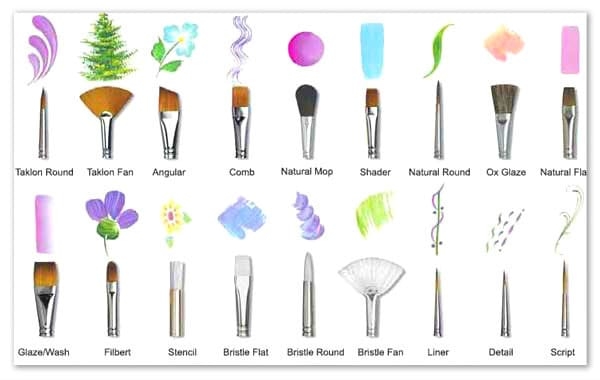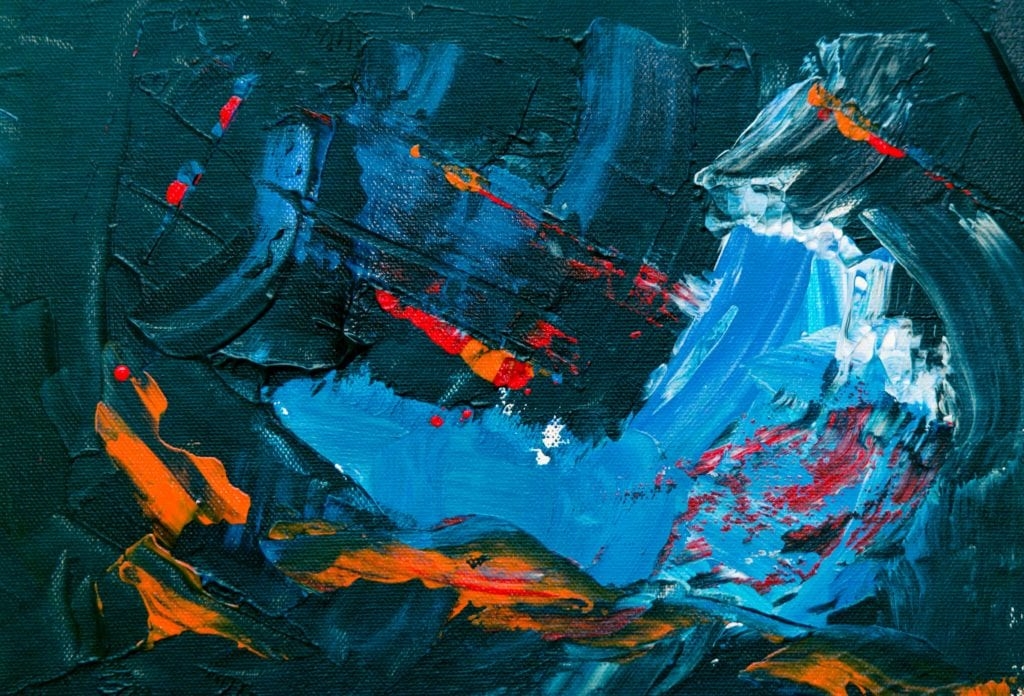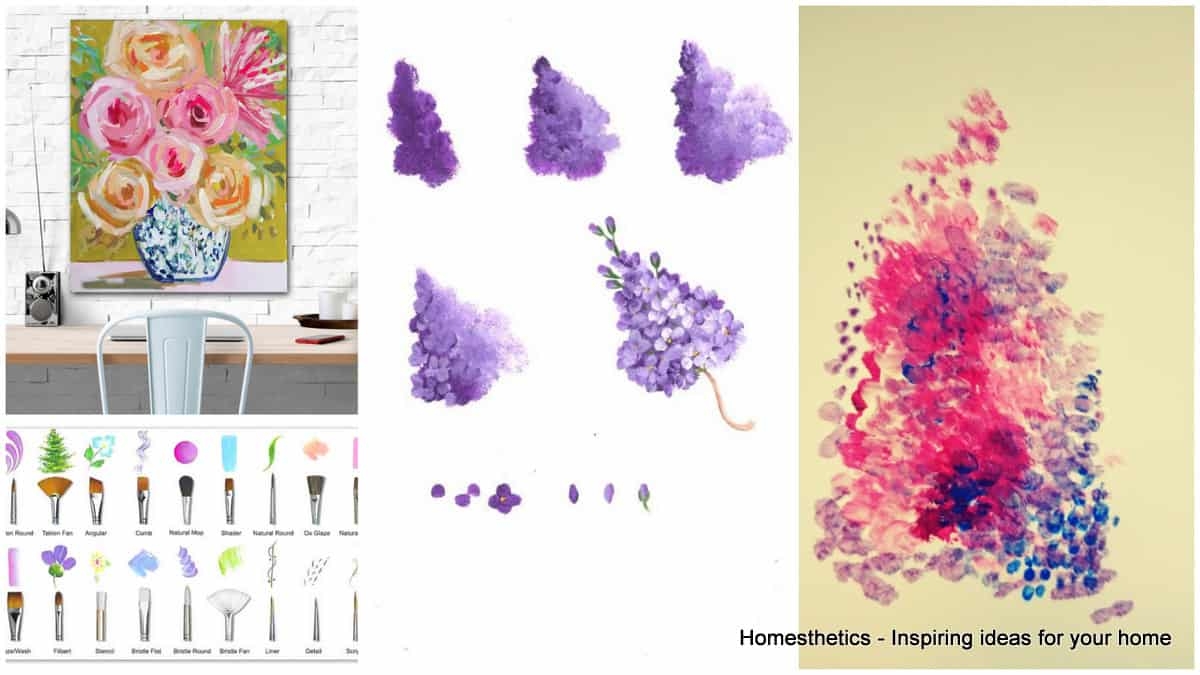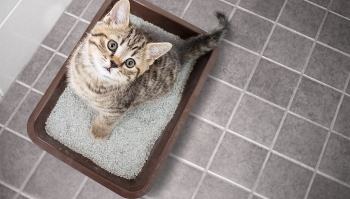Acrylic Painting Tips for Beginners
 |
| Photo: Givdo Home Ideas |
Features of Acrylic Painting
As a usual fact, Acrylic paints are soluble in water. But when dry, it is water-resistant. This painting shows its unique characteristics depending on the way of paint diluted with water. As it is diluted with more water, it resembles a painting like a watercolor painting. If the acrylic gels, medium or pastes used in an effective way, it projects it as an acrylic painting.
Learn Techniques on How to Apply Acrylic Paint
The basic materials- an acrylic brush, a piece of paper and acrylic paint are the essential elements that can be mixed to create an unbelievable painting. Let’s go over a few techniques that will provide a variety of styles of creating your desired creation.
Dry brushing
 |
| Photo: Homesthetics |
Acrylic paints come in very strong pigmented tones and unless diluted by water, the tones you will obtain on canvas or paper will be rather strong. When using the dry brushing technique, the effect will be one of uneven brush. You could use water to smooth the edges and soften the touches but if you are looking for texture and direction, choose this simple basic technique.
Adding water
Acrylic paint can be used in a similar manner to watercolor when enough water is added to the mixture and offers a translucent coat to the used paper. Take into account though that unlike watercolors which can be diluted again on paper after having dried, acrylics dry and set on the paper or canvas forever, mistakes cannot be erased, tones cannot be changed, according to Homesthetics.
Use professional grade paint
Not craft paint, if you can afford it. There are many brands available at various prices.
Professional grade paint has more pigment and will make it easier for you to blend and give better coverage. Most major brands also have decent student grade paints that work well for beginners.
Learn how to mix colors
 |
| Photo: Ivisualarts |
Learning to mix your own colors and shades will save you money and expand your palette. You can learn to mix any color from the three primary colors, red, blue and yellow.
Clean your brushes
With mild soap and water after each painting session. Dried paint is almost impossible to get out of brushes.
Lay your brushes flat to dry to prevent water from getting into the ferrule and loosening the glue. Water will also cause the wood to swell and the lacquer to peel on the handle.
Never leave your brushes sitting in water for long periods of time for this reason.
Store your brushes with the bristles facing up
The bristles can become splayed and bent if they are stored bristle down in a jar. Make sure they are clean and dry and then store them bristles up in a jar or other container.
Have a Clean, Dust-Free Workspace
When you put time and effort into a painting, the last thing you want is to find is dust, pet hair, or even bugs dried into the finish.
This can be avoided by cleaning, dusting and/or vacuuming the entire room where you work. Avoid fans, ceiling fans, and open windows. Windows can also let in bugs, and they might land in your wet paint.
If you have pets, set up your workspace in a place they can't access. You'll avoid pet hair problems, or finding a tipped painting and a pet covered in paint.
Work on a Level Surface
I learned this lesson the hard way when I did one of my first paintings on a surface that looked level but wasn't. The paint dried in a thick pool on one edge of my board and looked thin on the other.
If you don't already have a level, get an inexpensive one at a hardware store to check your surface before pouring.
Have a Plan for Each Painting
Try to have a general idea of what theme and colors you'd like to try before getting started. Simple things like choosing colors that look nice together can help prevent a painting with muddy tones.
Keep Notes for Each Painting
 |
| Photo: Homesthetics |
As a beginner, one of the best ways to improve your acrylic pouring skills is to learn what works for you and what doesn't.
It's helpful to write down and save the "recipe" and process for each of your paintings. If a painting turns out well, you’ll know what specific products and method you used, and how to create a similar one. If it doesn't, you'll know what to avoid.
This doesn't take much time and can save time and money on supplies in the long run. After a few paintings, you'll likely see a pattern of what products and/or techniques create your best work.
Don’t Shake the Pouring Medium
It's an easy mistake to make if you're new to pouring, but shaking a bottle of pouring medium can create little air bubbles that will get trapped in the surface of your work.
If you need to mix or blend paint, use a wood craft stick. Stir slowly and gently to avoid adding air bubbles.
Work in layers
While the fast drying time of acrylics paints can be a disadvantage, it can be very advantageous as well. The fast drying time, and permanent nature of acrylic paints makes working in layers an ideal method to paint with them. Oil paintings are traditionally done in many layers over the course of several weeks or even months. When using acrylic paints you can achieve similar results in a matter of only days or hours.
Experiment with a variety of techniques
The main appeal of acrylic paints is their versatility. You can dilute them down and work with them like watercolors, or you can work with thicker impasto techniques like you would with oil paints. By experimenting with the versatility of the paints you can develop your own unique painting style that combines different techniques of both thin and thick paint application.
Pay Attention to the Quality of Materials!The quality of the materials you use is crucial, especially the paint. There are student quality canvasses, brushes, and paints and professional ones available as well. Student quality has a smaller percentage of pigment in the acrylic binder and fillers. It’s hard to see the difference until you start painting with it. The paint behaves in a less efficient and more challenging way. When in doubt, opt for professional quality. Otherwise, you may waste time and energy to obtain the results you want. The rule of thumb is this: Get the best tools you can afford. For paint, Golden is a great brand and so is Liquitex. Pay attention to the labels and avoid paints that say "student" or "studio". Go for "artist" quality. |
 New Year Food: How to make Tteokguk - Korea's traditional dish New Year Food: How to make Tteokguk - Korea's traditional dish Have you ever heard about Tteokguk - a Korea's traditional New Year food? If not, please spend your precious time reading this piece of information ... |
 New Year Food: How to Make Japanese Ozouni New Year Food: How to Make Japanese Ozouni Ozouni お雑煮 is Japanese New Year mochi soup. It is a traditional soup that Japanese people eat on New year’s days. It is certainly a ... |
 How to take care of your cat properly at home? How to take care of your cat properly at home? If you plan to raise a cat at home but don't know how to take care of it, don't worry. Spend a little time reading ... |


























